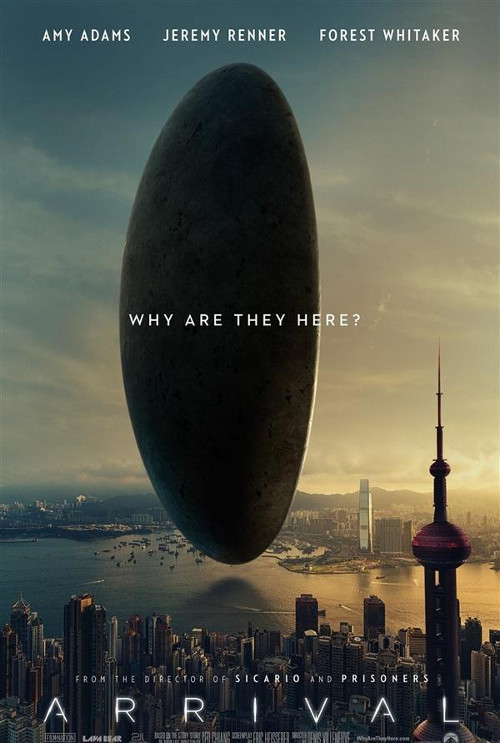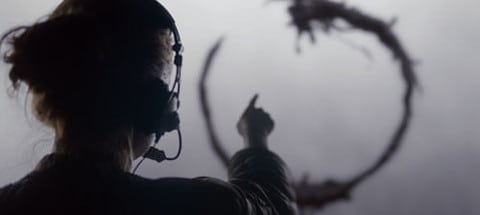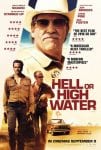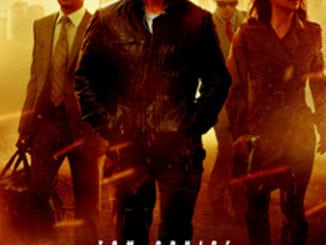Arrival (2016)
Directed by: Denis Villeneuve, Michael Stuhlburg
Written by: Eric Heisserer, Ted Chiang
Starring: Amy Adams, Forest Whitaker, Jeremy Renner
USA
IN CINEMAS NOW
RUNNING TIME: 116 min
DIRECTED BY: Dr Lenera, Official HCF Critic
Twelve mysterious extraterrestrial spacecraft touch down across Earth, nicknamed “Shells” by the U.S. military. Their purpose in arriving, as well as whether there is logic behind the specific landing sites, is unclear. Louise Banks, a skilful linguist who hasn’t long suffered the death of her daughter, is selected to lead a special team created to enter a Shell which touched down in Montana. Also in the team are theoretical physicist Ian Donnelly and US Army Colonel Weber. After first contact with two cephalopod-like aliens, two-way communication in the aliens’ spoken language seems impossible. However, Louise and Ian discover they are able to communicate with them using their written language….
Arrival came to this critic with a hell of a lot to live up to, be it the generally very positive reviews it’s getting, or the quality of the previous films of director Denis Villeneuve who I think is one of the most exciting filmmakers working in Hollywood today. While, as usual, I never read any other reviews of it immediately prior to doing my own, I did glance through a few early ones a couple of weeks ago and saw that two science fiction movies I really like [The Day The Earth Stood Still and Contact], and two science fiction movies I totally and utterly adore [Close Encounters Of The Third Kind and Interstellar] were apparently a major influence on Arrival. In fact the DNA of quite a few films dealing with aliens visiting Earth is all over this one, yet Villeneuve has still managed to make one that is quite unique and which feels very fresh and timely [while also being highly reminiscent of, oddly, the Cuban Missile Crisis]. Yes, Villeneuve has done it again with this very cerebral film which is both highly fantastical and deeply human, and which tells a story which is both large scale and very intimate. Those after lots of explosive action will no doubt being disappointed by the film, and it is admittedly a bit repetitious, but those who fancy a more intelligent experience which may both make you think and may also move should be quite satisfied.
It begins with an opening montage, scored with plaintive beauty by composer Jóhann Jóhannsson, showing how the daughter of linguist Louise Banks grows up and then dies of an illness in hospital, which meant for me that Up! was no longer alone in making me cry at a film in the first few minutes. In fact, a fairly recent personal event [different to but not entirely unrelated to the one depicted in the film] experienced by this critic made him wonder if the film was going to be too hard to take [I’ll happily watch a sad film if I know it’s going to be sad, but when I’ve avoided plot descriptions and the film ‘hits’ you immediately it’s a different kettle of fish]. We do get into the sci-fi aspect almost immediately, as Louise is teaching at a nearly empty class until one of her students get a text message and tells Louise to put on the TV. Huge black lens-shaped craft appear to levitate noisily slightly above the Earth’s surface, throwing our planet into chaos. Why are they here? Why did they choose these particular locations? The Russians and the Chinese immediately sense a threat and threaten to respond in a not very polite way, but the Americans [who I would have thought would be right behind the Russians in behaving aggressively, but hey, it’s a movie] recruit Louise to join physicist Ian Donnelly and Colonel Weber to adopt a more thoughtful approach. Now I thought that Amy Adams was superb in last week’s Nocturnal Animals, but she tops her very perceptive and thoughtful performance in that film with her simply terrific effort in this one, never going for the obvious ‘Oscar-esque’ moments and continually subtle. It’s proof that she’s one of the best actresses in Hollywood today [we’re put her weak performances as Lois Lane down to the shoddy quality of the material that she had to work with].
Every 18 hours, a hatch opens up at the bottom of all the Shells to admit some humans and take them up into an audience chamber to try to communicate with the aliens, separated by an invisible wall. Now if you remember that achingly tense sequence in Sicario when the good guys go across the border into Mexico, then you’ll know how much of a master Villeneuve is at building tension when little is actually happening, and he does it again here, the journey to and entry into the Montana Shell really taking forever but being so incredibly suspenseful, Jóhannsson’s edgy music, which incorporates some very odd sounds at times, again contributing to the effect. Rather cheekily, this first meeting with the fog shrouded aliens ends with nothing taking place despite all the build-up, but the humans do return to try to communicate again with the seven tentacled creatures which may have been inspired by the ones in the novel of The War Of The Worlds. Starfish-like appendages appear from the ends of their limbs to squirt ink onto the invisible wall. Their written language proves to be extremely complicated, consisting of lots of circular symbols which have no true beginning or end, but if anyone can crack it it’ll be Louise, though misunderstandings are bound to occur.
A great deal of time is given to these ‘conversations’, and reactions to them, and I could have personally done with one less of these scenes. Nonetheless, interest is maintained and soon begins to increase again when the Shells may be attacked by military forces and Louise begins to dip into her past for answers to the present. Her flashbacks become increasingly predominant but are inserted into the present story in a manner which doesn’t seem intrusive; after all, they become the key to the whole thing. What seems like the lead-up to some conflict never really pays off, which even disappointed me a bit until I thought a bit more about the film, but it’s made up for by a twist about which there already seems to be debate about whether people guessed it before it was actually revealed or not. It does all get a little mind-bendy [in some ways Arrival ends up most resembling Enemy most out of Villeneuve’s previous pictures] and I’m not going to go into details as it’s best if you’re surprised by it [or not]. In fact I’m not even going to mention what is really the central message of the film, but it’s a highly resonant one and one that I found very meaningful personally, to the point where the movie almost acted as a cathartic experience. And it’s not as if there aren’t other important themes in Arrival, from the ease and dangers of misunderstanding to the need for cooperation between nations and cultures, however different they may seem.
Action-wise there’s a suspenseful bit with a bomb and some off-screen gun fighting, and that’s it, but screenwriter Eric Heisswerer and Villeneuve bravely resist the determination to go for the easy options and it ends up being all the better for it. Something I wasn’t entirely sure about was whether, in the end, the human story needed the alien story. Louise’s journey could probably have been dramatised, with only a few changes, just as successfully without cephalopods and spacecraft, though I was still glad they were there. Some may think that there’s far too many lengthy close-ups of Adams’s face, though I can’t say that I personally found that at all to be a problem, and isn’t it a nice change to have a filmmaker who likes to linger for a change. The direction, cinematography and set design all seem carefully chosen, like the darkened interiors in many of the early scenes, or the use of architecture to reflect Louise’s mindset. It begins square and geometric. When she learns of the arrival it starts curving the lecture hall desks. Later, it’s more circular [e.g. the hospital corridors], mirroring the shift in language and perception. Subtle nuances like this really are the sign of a great filmmaker, though I don’t understand why he decided to use Max Richter’s overused music piece On The Nature of Daylight in one scene. We used to have Samuel Barber’s Adagio For Strings and then Arvo Part’s Spiegel im Spiegel being used ad nauseam, and now we have this one, which has has been used in movies six times in recent years!
The special effects are as good as one should expect, while there’s a stunning moment with a cloud that looked for all the world like CGI to me but was actually real, a depressing sign of the way our eyes have been conditioned I suppose. The characters all tend to be fully rounded and well played, from Jeremy Renner’s physicist with a dry sense of humour to Forest Whittaker’s general who isn’t a trigger-happy idiot but someone whose job is just to get answers in order to find the safest and most humane solution possible. There’s even the odd laugh, like a reference to Sheena Easton. Though I don’t think that it’s quite the masterpiece that many are claiming it to be, it’s not far off. Arrival manages to balance the intellectual and the emotional, and the intelligent and the entertaining, so well, that I have to say….bring on Blade Runner 2049!
Rating: 

















Be the first to comment